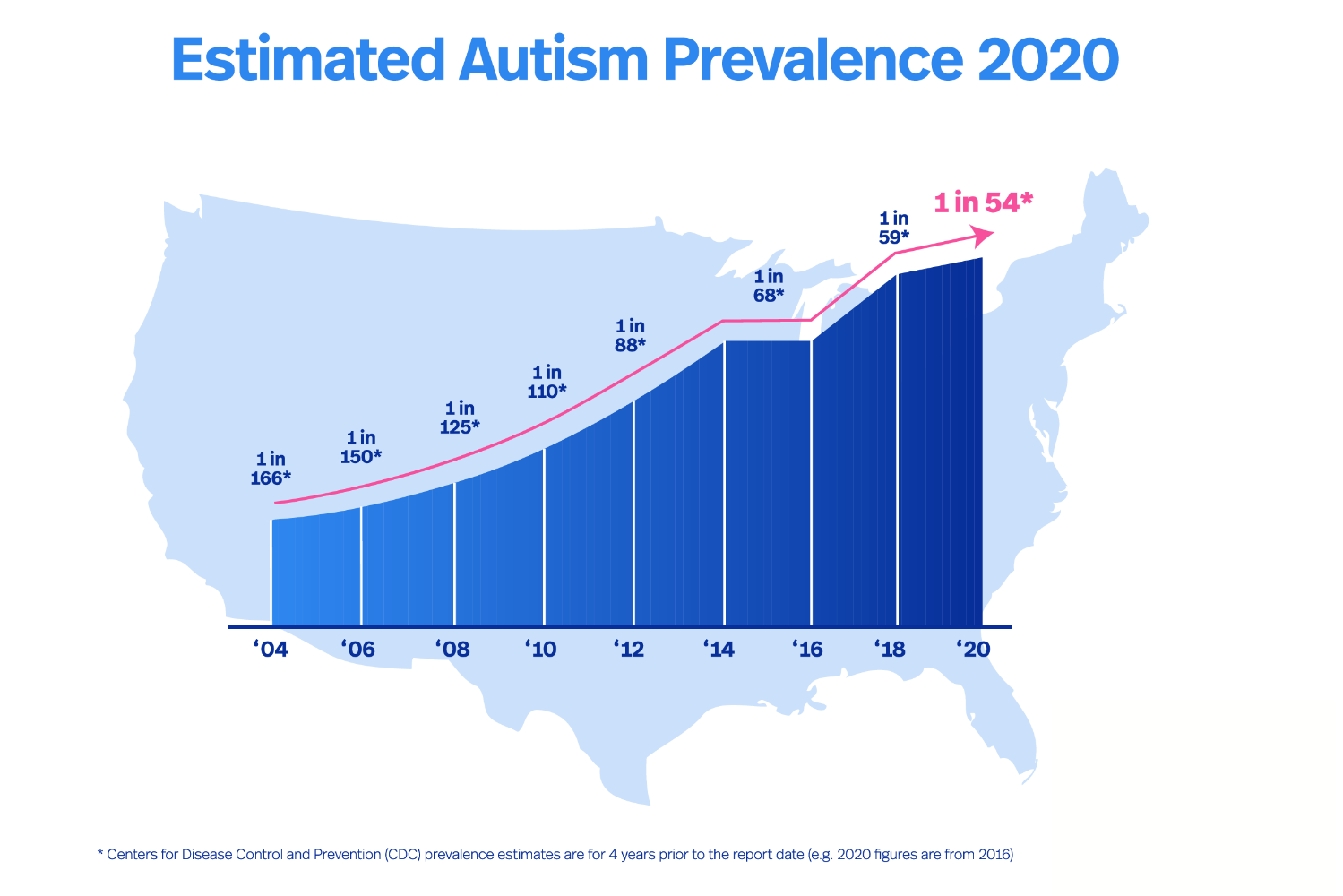Where is autism most common
Key facts
- One in 160 children has an autism spectrum disorder (ASD)(1).
- ASDs begin in childhood and tend to persist into adolescence and adulthood.
- While some people with ASD can live independently, others have severe disabilities and require life-long care and support.
- Behavioral treatment and parent training programmes, both of which are evidence -based, can decrease challenges in communication and social behavior, with a positive effect on wellness, functionality and quality of life for persons on the spectrum and their caregivers.
- Broader actions within interventions geared towards ASD persons are needed particularly in making physical, social and attitudinal environments easier to access, supportive and welcoming.
- ASD diagnosed persons are often globally subject to stigma, discrimination and human rights violations. In the majority of the world, access to services and support for people with ASD are insufficient.

In 2018, the Centers for Disease Control’s Autism and Developmental Disabilities Monitoring (ADDM) reported that approximately 1 in 59 children in the United States has been diagnosed with an Autism Spectrum Disorder (ASD). This is a 14% increase estimate from the 1 in 68 rate in 2016 and a 47% increase from the 1 in 88 rate in 2012. In the 1980s 4 in 10,000 persons were documented as being the average rate of an ASD diagnosis. In the nineties, the rate was 1 in 2500 for being diagnosed with ASD and later 1 in 1000 as being diagnosed with ASD.
Conflicts of view are created when one begins to compare autism rates over the last three decades, as the diagnostic criteria for autism have been in constant revision, with each revision of the Diagnostic and Statistical Manual (DSM), which outlines which symptoms meet the criteria for an ASD diagnosis. For example, the 1983 DSM did not recognize PDD-NOS or Asperger’s syndrome, and the criteria for autistic disorder (AD) were more restrictive. Additionally the DSM-IV, a previous version of the now current DSM V, included autistic disorder, childhood disintegrative disorder, PDD-NOS, and Asperger’s Syndrome. As a consequence of these inconsistencies in diagnosis and on-going studies on autism, the most recent DSM (DSM 5) only has one diagnosis, autism spectrum disorder (ASD), which serves as an umbrella term under which four other syndromes and disorders are classified. In the most recent publication of the DSM V, to be diagnosed autistic, one must have both deficits in social communication and interaction, and restricted repetitive behaviors, interests, and activities (RRBs).
Interestingly, boys are 4 times for more likely to be diagnosed as being on the autism spectrum (1 in 37) than among girls (1 in 151) and they are reported in all racial, ethnic, and socioeconomic groups. According to studies spanning several continents, (Asia, Europe, and North America) a prevalence rate of approximately 1 percent is reported. A 2011 study reported a 2.6 percent prevalence of autism in South Korea.
